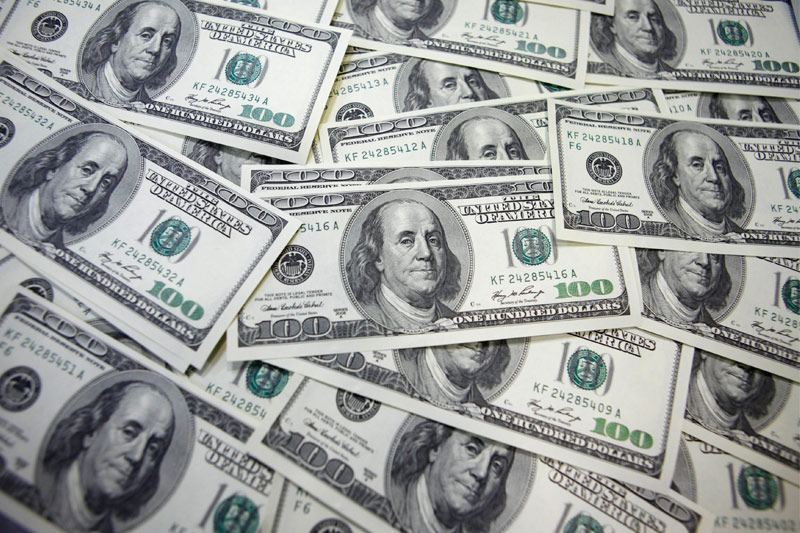* 10-yr US yield hits near 7-year high, dollar hits 2018 peak
* Data shows U.S. consumer spending picking up
* Wall Street indexes, global stock gauge drop
* Oil prices steady, boosted by Iran fears
(Updates with open of U.S. markets, changes dateline; previous LONDON)
By Lewis Krauskopf
NEW YORK, May 15 (Reuters) - The U.S. dollar and Treasury yields jumped on Tuesday following U.S. data showing a rise in monthly U.S. retail sales, weighing on stocks that also were undercut by renewed worries over global trade frictions.
The yield on the benchmark U.S. 10-year Treasury note touched its highest since July 2011, while the dollar hit its highest point of the year against a basket of currencies. Wall Street's main stock indexes slumped, with investors concerned that rising bond yields would hurt stock valuations.
U.S. retail sales rose moderately in April as rising gasoline prices cut into discretionary spending, but consumer spending appeared on track to accelerate after slowing sharply in the first quarter. U.S. Commerce Department said retail sales rose 0.3 percent last month, while data for March was revised up to show sales surging 0.8 percent instead of the previously reported 0.6 percent. data indicated consumer spending is stronger than expected by the market, said Jon Mackay, investment strategist at Schroders (LON:SDR) North America in New York.
“The implication is that means inflation has more upside potential which means the Fed is more likely than not to hike four times this year, versus what the market was pricing in a month ago which is two to three times,” Mackay said.
The benchmark government yield US10YT=RR eclipsed 3.05 percent, blowing through the key psychological level of 3 percent it hit in late April for the first time in four years. 10-year notes US10YT=RR last fell 17/32 in price to yield 3.0576 percent, from 2.995 percent late on Monday.
The dollar index .DXY , tracking it against six major currencies, rose 0.69 percent, with the euro EUR= down 0.61 percent to $1.1852. resurgent tone for the U.S. dollar is largely due to, number one, the move higher in Treasury bond yields across the curve and number two, the relatively solid data we saw on retail sales," said Omer Esiner, chief market analyst at Commonwealth Foreign Exchange Inc in Washington D.C.
After improved trade sentiment helped stocks on Monday, equities were again jostled by developments involving U.S.-China talks.
Earlier on Tuesday, U.S. Ambassador to China Terry Branstad said the United States wanted a timetable on how China would open up its markets to U.S. exports, with the two countries still not close to resolving trade frictions. little bit of today's jitters are related to a hangover to yesterday's wrongly placed exuberance that a trade deal was imminent and the reality is we are in for a long slugfest between the U.S. and China,” Mackay said.
On Wall Street, the Dow Jones Industrial Average .DJI fell 197.2 points, or 0.79 percent, to 24,702.21, the S&P 500 .SPX lost 19.78 points, or 0.72 percent, to 2,710.35 and the Nasdaq Composite .IXIC dropped 73.24 points, or 0.99 percent, to 7,338.08.
Home Depot (NYSE:HD) HD.N shares fell 1.7 percent after the home improvement chain missed Wall Street's sales forecast. pan-European FTSEurofirst 300 index .FTEU3 edged up 0.17 percent.
German growth halved in the first quarter of the year due to weaker exports and less state spending as disputes with the United States over trade and Iran's nuclear deal clouded the outlook for Europe's biggest economy. gauge of stocks across the globe .MIWD00000PUS shed 0.90 percent.
Oil prices hovered around multi-year highs, supported by concerns that U.S. sanctions on Iran are likely to restrict crude oil exports from one of the biggest producers in the Middle East. crude CLcv1 fell 0.07 percent to $70.91 per barrel and Brent LCOcv1 was last at $78.94, up 0.91 percent on the day.
